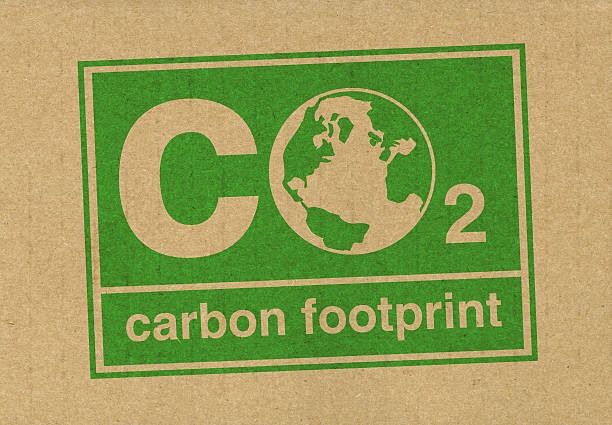
The phrase “carbon footprint,” which describes greenhouse gas emissions like carbon dioxide created by different human activities, is well-known to most individuals. They are believed to be mostly to blame for the current state of global warming. The global need for both manufacturing and consumption will only rise as Earth’s resources begin to run out progressively, and governments and organizations everywhere have stepped up to address one of the most urgent issues facing the planet. Let’s first examine climate change, its root causes, and what could be done to mitigate some of its impacts and avert future climate catastrophes to appreciate the significance of our carbon footprint. Simply dealing with your carbon footprint isn’t the complete solution; you also need to deal with trash and everything, but that can be done with the services of professionals at Skip Hire Scarisbrick.
A Carbon Footprint: What is It?
A carbon footprint is one of the primary metrics used to quantify the impacts caused by worldwide climate change. An environmental indicator that demonstrates how many greenhouse gases (GHGs), expressed as CO2 equivalents, are being released in either a direct or indirect manner as a consequence of a particular activity is what it is known. Such emissions might be associated with an individual, organization, product, or specific activity or event. These activities emit greenhouse gases, such as carbon dioxide (CO2) and methane (CH4), into the atmosphere, e.g. burning fossil fuels, clearing land & the creation and usage of various products and services.
The Growing Climate Emergency
The climate problem is a current fact rather than a far-off prospect. Due in significant part to human activity, global temperatures have been rising by about 1.2°C since the pre-industrial era. An increase in sea levels, greater intensity and frequency of heatwaves, and erratic weather patterns are just a few of the disastrous effects of this minor rise. Irreparable harm could result if carbon emissions are not addressed immediately.
Impacts on the Economy and Society
Beyond just harming the environment, a huge carbon footprint has significant negative effects on the economy and society. Every year, billions of dollars are invested in attempts to recover from extreme weather catastrophes like hurricanes, floods, & wildfires, which have become more frequent and expensive. Furthermore, because they lack the means to recover from climate-related calamities, marginalized populations frequently suffer the most. Therefore, managing the carbon footprint is a social justice issue and an environmental one. If nothing is done now, inequality will increase, and subsequent generations will face a financially untenable future.
Technological Advancements:
Probably most strongly, immediate action is argued based on the availability of cutting-edge technologies that may help reduce carbon footprints. These days, there are so many renewable energy resources that are accessible and pretty inexpensive: wind, hydropower, or even solar. However, electric vehicles are becoming very popular as an alternative to ground transport that uses fossil fuels. New technologies for capturing and storing carbon also present new ways to decrease emissions from hard-to-decarbonize businesses. Engaging in such innovations now can speed up the shift to a low-carbon economy and open up new jobs and economic prospects.
The Function of Policies and Governments
Government engagement is essential to manage carbon footprints on a big basis. Businesses and individuals may be pushed towards greener practices by policies like carbon pricing, renewable energy subsidies, and increasingly stringent emissions laws. The Paris Accord and other international accords highlight how crucial it is to fight climate change together. However, pledges need to be followed through as well, and countries need to be held responsible for achieving their emission reduction goals. In the absence of strong regulations & enforcement systems, attempts to reduce carbon footprints won’t be successful.
The Influence of Personal Behaviour
Individual acts are crucial in lowering carbon footprints, even though structural reform is also necessary. Easy lifestyle changes like cutting back on trash, preserving energy, and selecting sustainable items can greatly impact carbon footprints. Education initiatives and public awareness campaigns enable people to accept accountability for their carbon footprints. People seem more inclined to embrace environmentally friendly habits and promote more extensive change because they recognize the significance of their activities.
Corporate Social Responsibility and Business Accountability
As one of the biggest sources of emissions worldwide, corporations play a crucial role in mitigating the carbon footprint. Companies must prioritize conservation by investing in renewable energy, cutting waste, and employing cleaner industrial techniques. Environmental conservation-focused corporate social responsibility (CSR) programs can help improve a business’s standing and increase customer loyalty. Businesses that ignore their carbon footprints could lose market share as customers grow increasingly ecologically conscientious.
Final Words:
We will take action now, which will shape tomorrow. This is the decision and the moment of truth. Let’s take on the task and provide a resilient and environmentally conscious legacy.
Do you enjoy exchanging the information you have studied? Follow us and write for us +Health and Fitness to increase your visibility and share your knowledge with your audience!